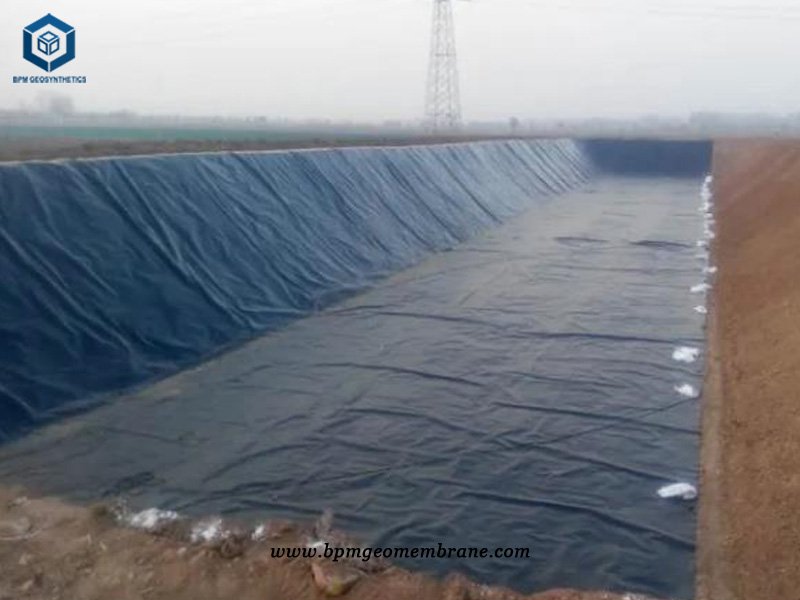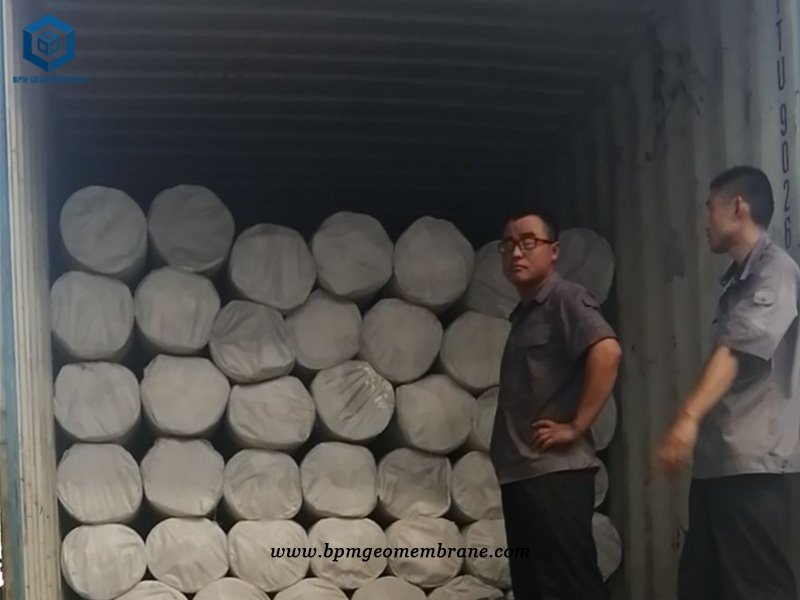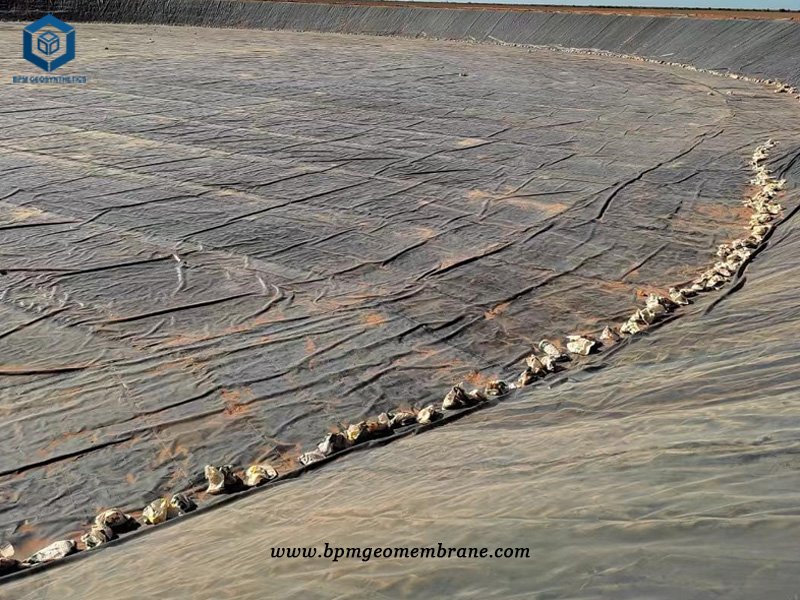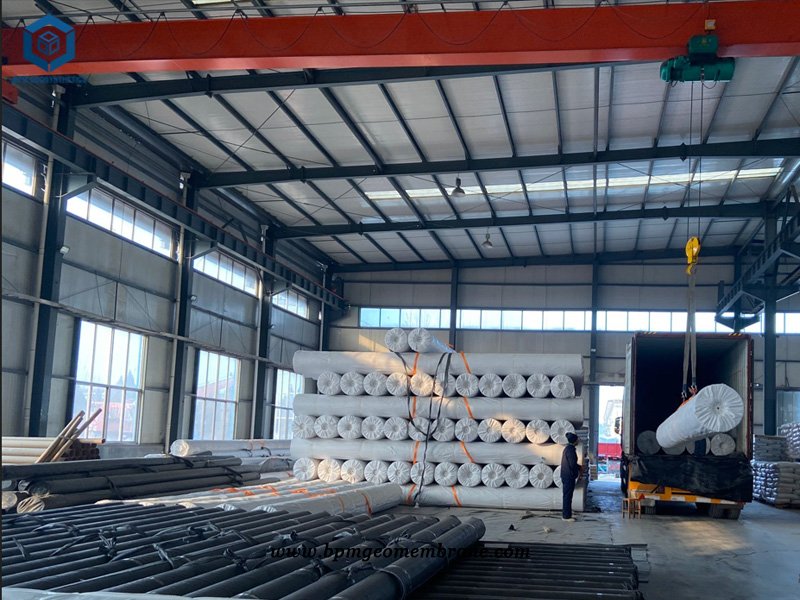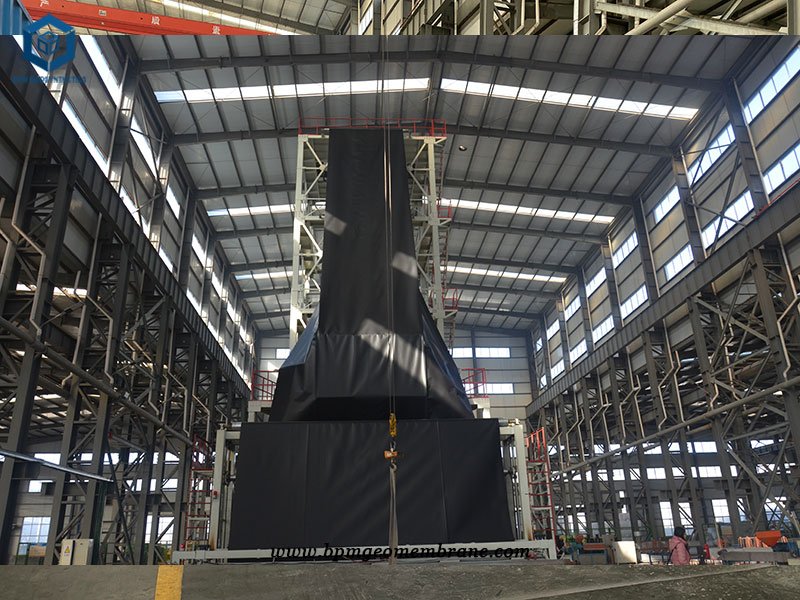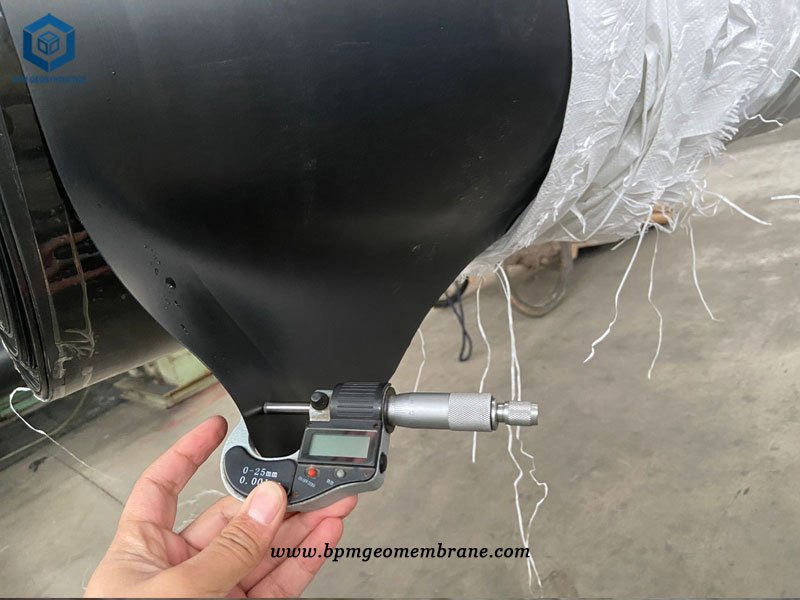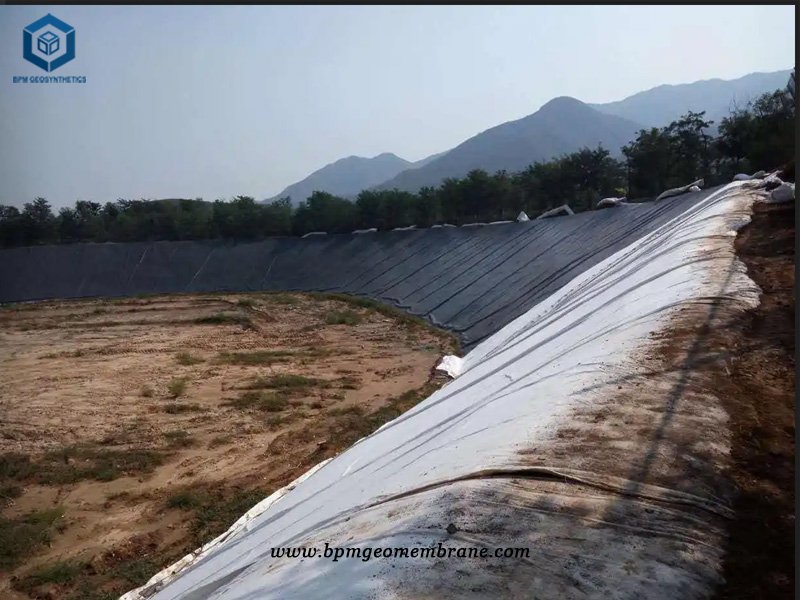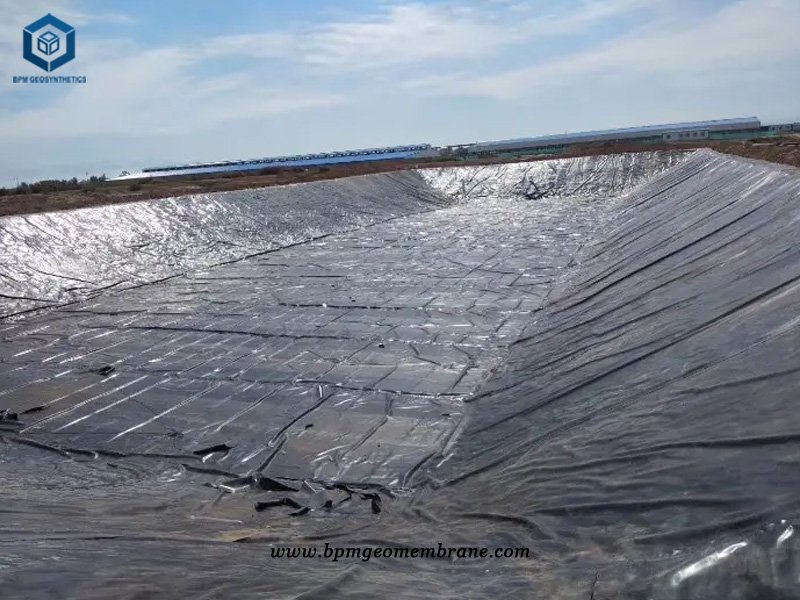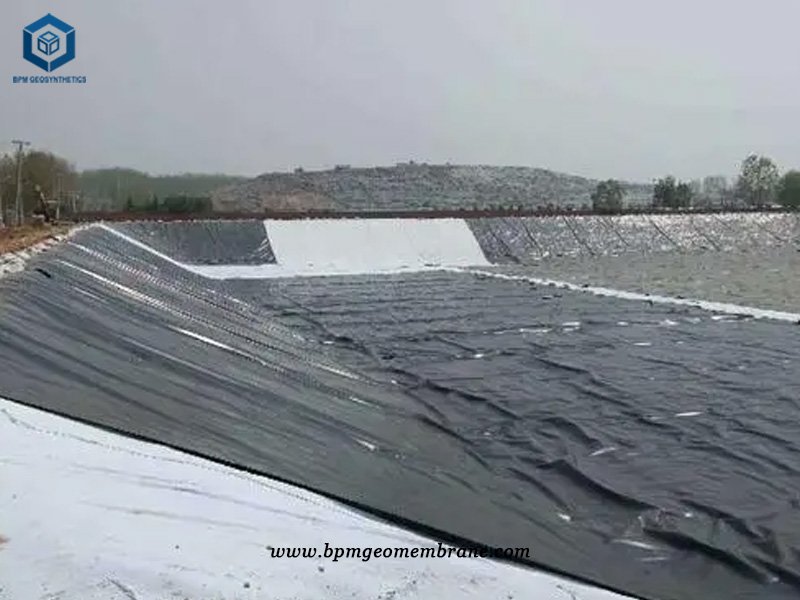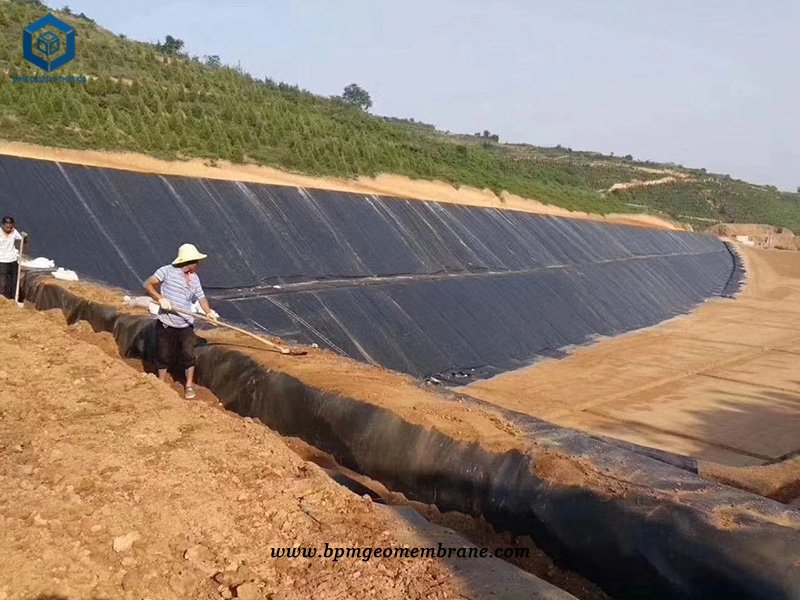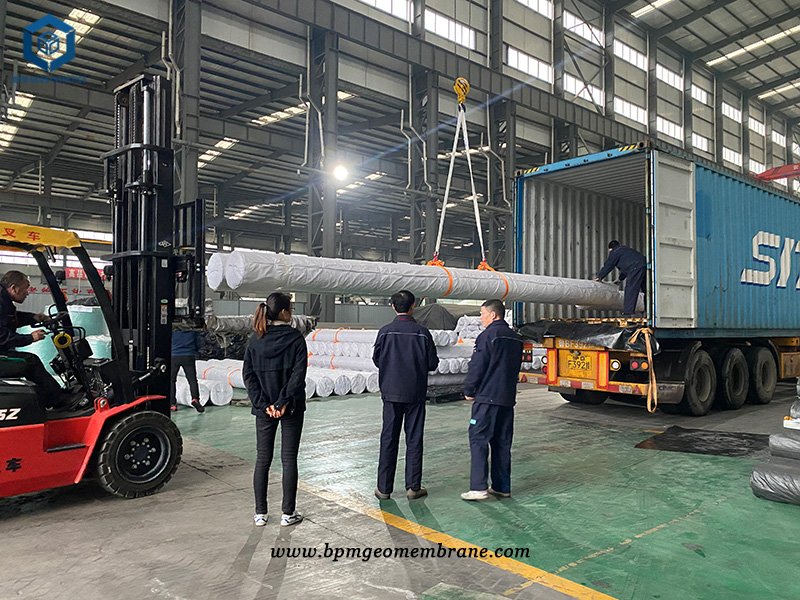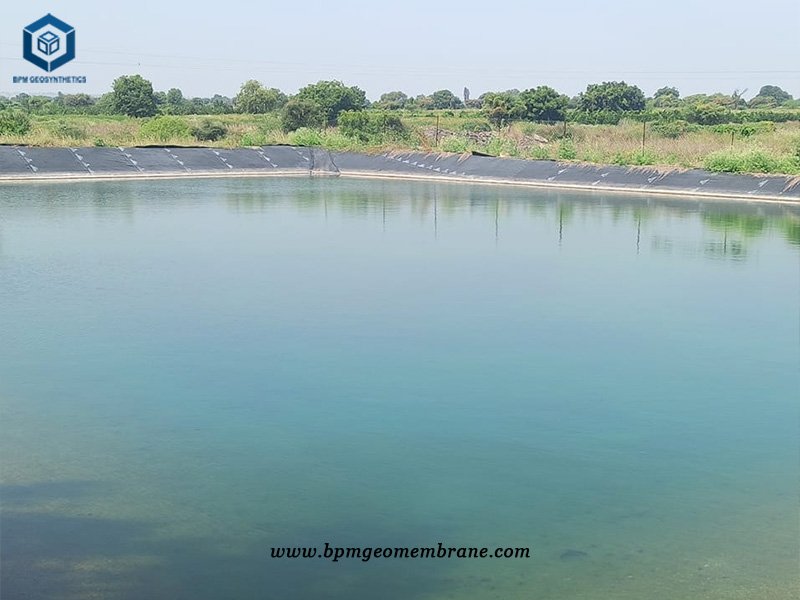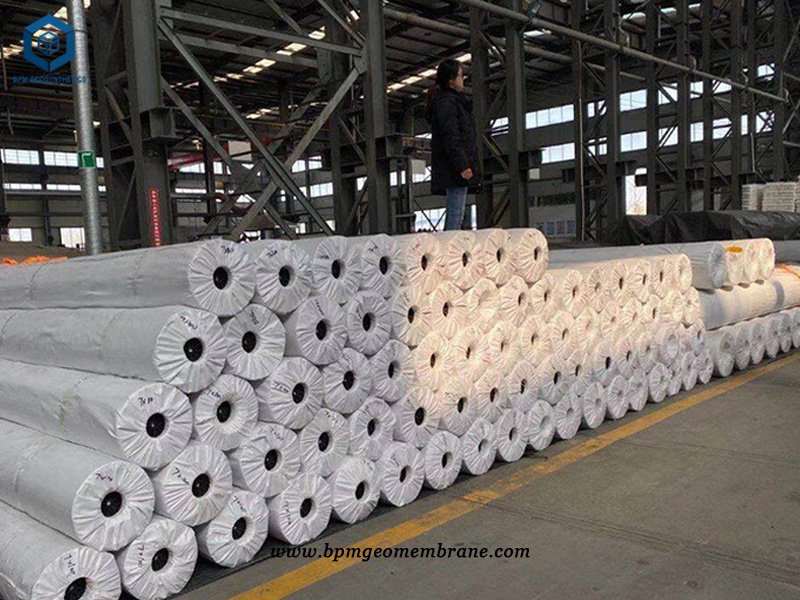Construction method of HDPE Geomembrane Pond Liner
Before applying impermeable large pond lines for sale, the slope surface should be leveled to prevent sharp outburst, and then the loose soil should be covered with impermeable membrane.
1) It should be extended from the bottom to the high position, not too tight, and 1.50% margin should be reserved for local sinking and stretching. Considering the actual situation of the project, the slope is laid from top to bottom.
2) The two adjacent longitudinal joints shall not be in a horizontal line, and shall be staggered by more than 1m.
3) The longitudinal joint shall be more than 1.50M away from the dam foot and bending foot, and shall be set on the plane.
4) Slope first and then bottom.
5) When the slope is laid, the film spreading direction should be basically parallel to the maximum slope line.
Slope laying: before laying the anti-seepage geomembrane on the slope, the laying area shall be inspected and measured. According to the measured size, the anti-seepage geomembrane with matching size in the warehouse shall be transported to the anchorage ditch platform of phase I. during laying, the convenient way of “pushing” from top to bottom shall be adopted according to the actual site conditions. In the sector area, it should be cut reasonably to make the upper and lower ends firmly anchored.
Site bottom laying: before laying the anti-seepage geomembrane, the laying area shall be inspected and measured, and the anti-seepage membrane matched with the size in the warehouse shall be transported to the corresponding position according to the measured size. During laying, the anti-seepage membrane shall be pushed manually in a certain direction.
Alignment and alignment:The paving of BPM HDPE textured geomembrane, no matter the side slope or the bottom of the field, should be flat and straight to avoid wrinkles and ripples, so as to make the two geomembranes aligned and aligned. According to the design requirements, the lap width is generally about 10 cm.
Pressing: press the aligned and aligned BPM HDPE textured geomembrane with sand bags in time to prevent the wind from blowing and pulling. Laying in Anchorage ditch: at the top of anchorage ditch, a certain amount of impervious membrane shall be reserved according to the design requirements for local sinking and stretching.
Longitudinal joint: the uphill section is on the upper side and the downhill section is on the lower side, and sufficient lap length ≥ 15cm shall be reserved. The bentonite pad shall be laid in the area after passing the acceptance, and the manual “push paving” shall be carried out in a certain direction.




